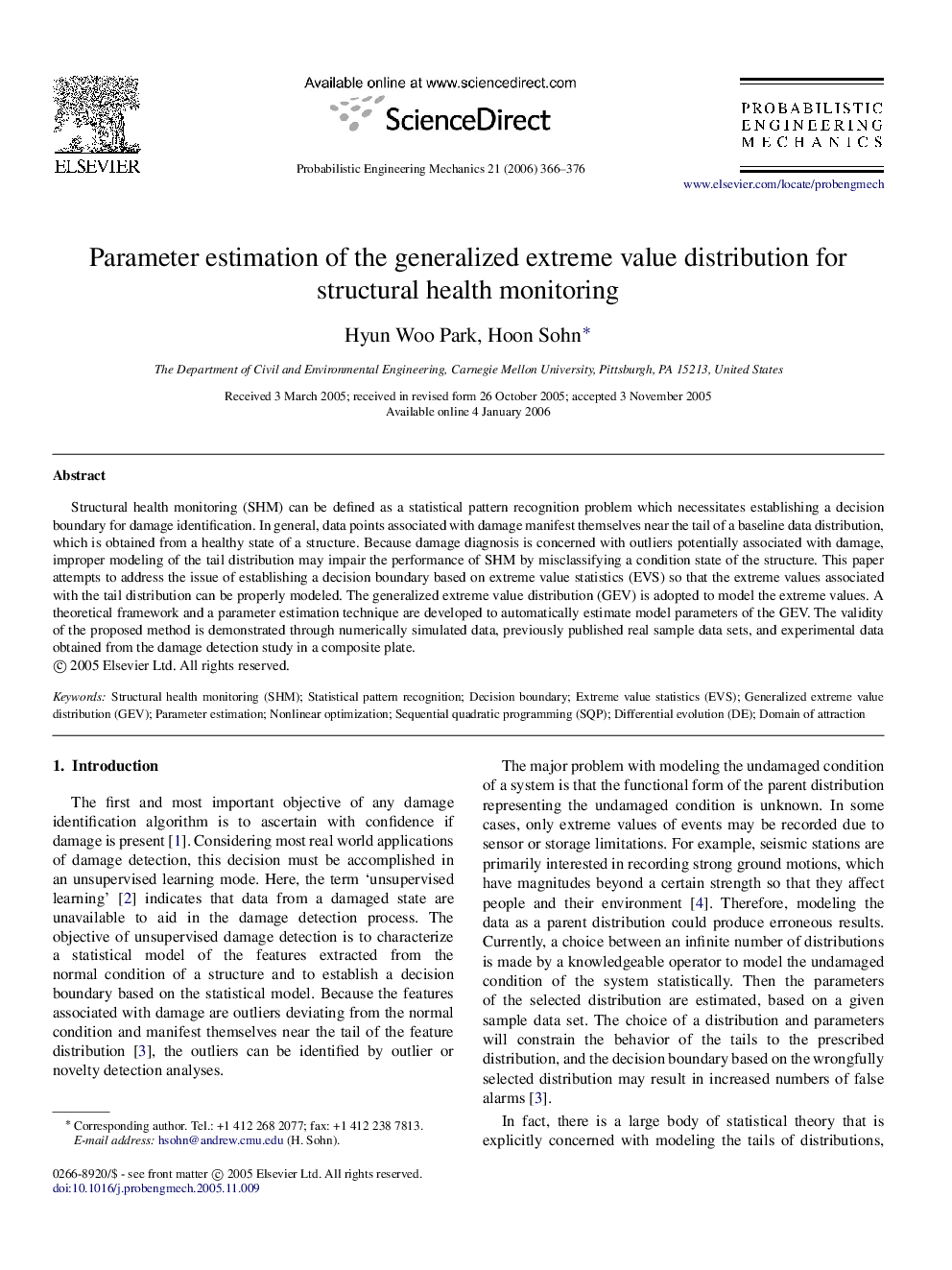| Article ID | Journal | Published Year | Pages | File Type |
|---|---|---|---|---|
| 805458 | Probabilistic Engineering Mechanics | 2006 | 11 Pages |
Structural health monitoring (SHM) can be defined as a statistical pattern recognition problem which necessitates establishing a decision boundary for damage identification. In general, data points associated with damage manifest themselves near the tail of a baseline data distribution, which is obtained from a healthy state of a structure. Because damage diagnosis is concerned with outliers potentially associated with damage, improper modeling of the tail distribution may impair the performance of SHM by misclassifying a condition state of the structure. This paper attempts to address the issue of establishing a decision boundary based on extreme value statistics (EVS) so that the extreme values associated with the tail distribution can be properly modeled. The generalized extreme value distribution (GEV) is adopted to model the extreme values. A theoretical framework and a parameter estimation technique are developed to automatically estimate model parameters of the GEV. The validity of the proposed method is demonstrated through numerically simulated data, previously published real sample data sets, and experimental data obtained from the damage detection study in a composite plate.
